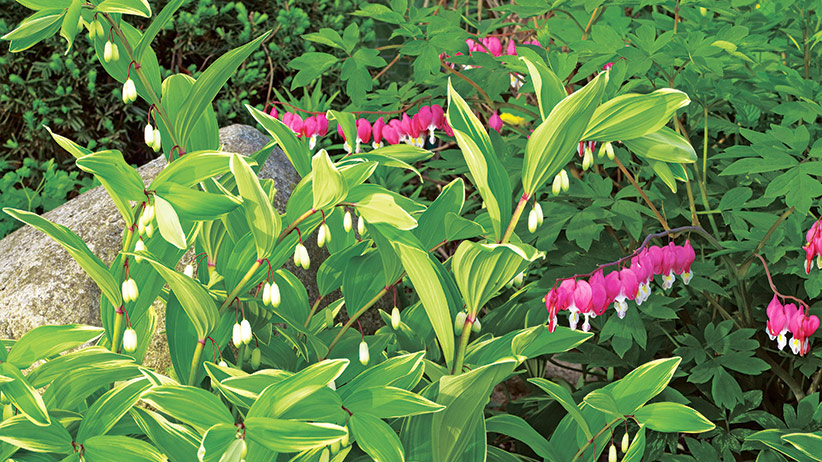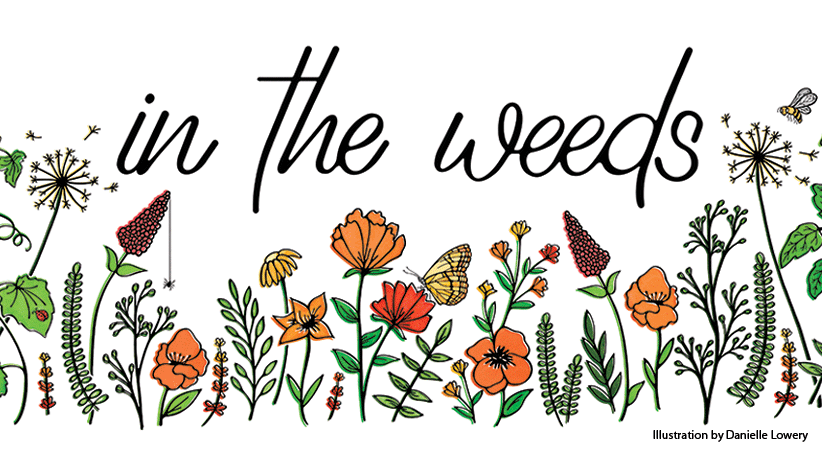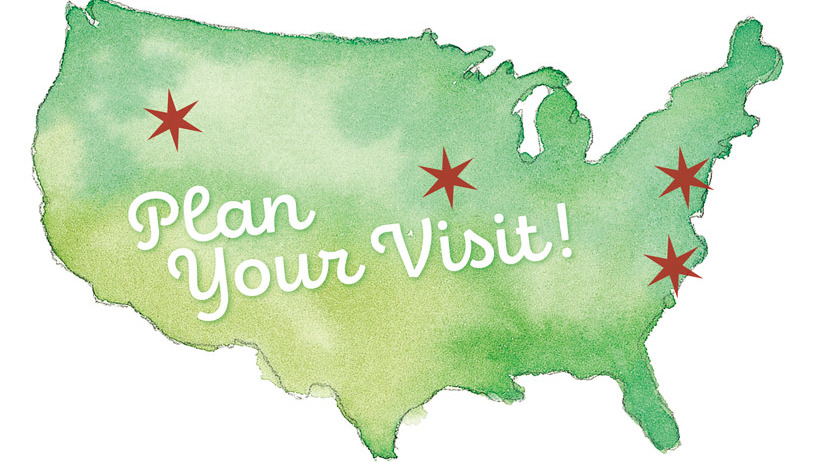Grow cool-season plants for pollinators
Summer brings plenty of flowers to keep pollinators happy, but what about late fall and early spring? As the weather cools in autumn, pollinators, like bees and butterflies, need nectar sources to build their energy reserves to get through winter hibernation or make a long migration journey.
Support spring pollinators
In spring, hummingbirds begin to appear, and hoverflies, butterflies and hibernating bumblebees and solitary bees will come out at the first sign of warmer weather. Meanwhile, honeybees don’t hibernate, but they will become more active and start collecting nectar as soon as your spring flowers arrive.
How to feed local pollinators in your garden
Grow a variety of fall- and spring-blooming flowers to keep them fed at both ends of the growing season. Look for a mix of bulbs, perennials, shrubs and annuals in different shapes and sizes so you can offer something for everyone’s taste. Even a couple of container gardens can help! Here are a few beautiful combos for fall and spring that’ll support your local pollinators too.
You Might Also Like:
Pollinator Collection | Garden Gate Store
10 Plants to Attract Hummingbirds
Bird & Butterfly Friendly Plants
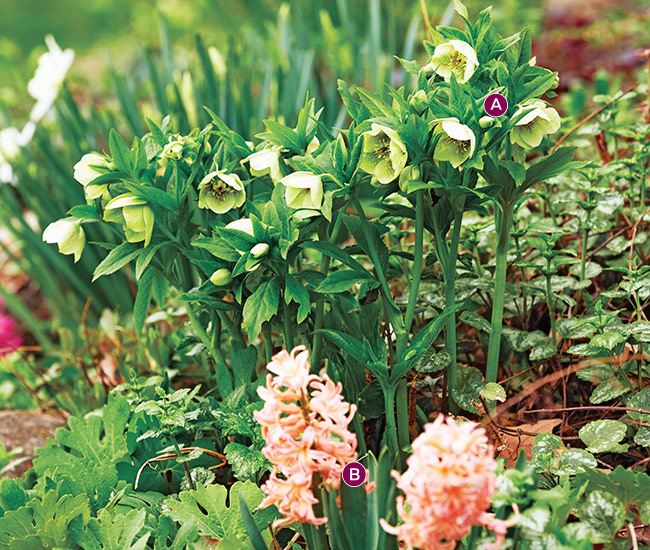
Fragrant spring plants for pollinators
Looking for an early spring combo packed with fragrance? One of the most powerful garden scents comes from the many varieties of hyacinth. You may not notice a hellebore’s subtle scent, but pollinators will be drawn to both of these beauties early in the year. Tubular flowers and strappy leaves of hyacinth pair well with thick, evergreen foliage of hellebores and its roselike blossoms. With many cultivars of these two plants to choose from, the combinations are endless. Cut off the flower stalks when hyacinth blooms are spent, and let the leaves remain so the plants can store energy in their bulbs for next season. Hellebores require little maintenance, but winter worn foliage can be cut back to the base of the plant in late winter to early spring.
A) Hellebore Helleborus spp. and hybrids
Perennial; white, pink, yellow, green, purple, rose red or burgundy blooms in late winter and early spring; part shade to full sun; 1 to 3 ft. tall and wide; cold hardy in USDA zones 4 to 9
B) Hyacinth Hyacinthus orientalis
Perennial bulb; fragrant blue, white, peach, red, yellow, purple, or striped flowers in mid-spring; full sun to part shade; 6 to 12 in. tall, 3 to 5 in. wide; cold hardy in USDA zones 4 to 8
You Might Also Like:
Fragrant Flowers for Your Garden
Spring-Flowering Bulbs
Best Places to Buy Bulbs Online
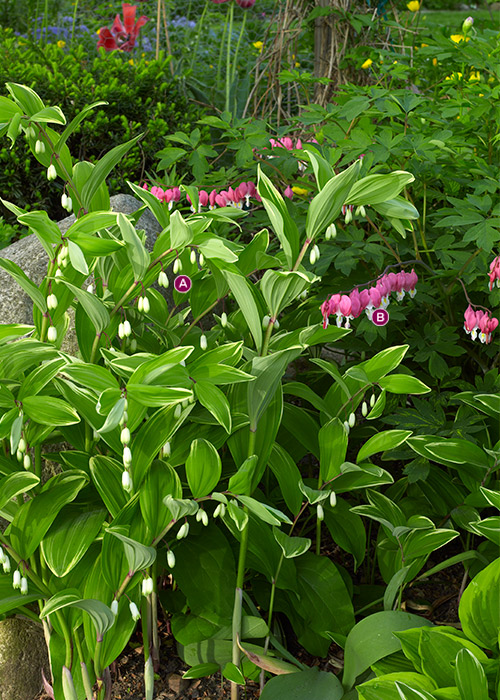
Spring pollinator plants for shade
Here’s a shade-loving pollinator combo: pair Solomon’s seal and old-fashioned bleeding heart. Their flowers bloom in the cool of spring and provide an early-season food source for waking pollinators, such as bees and butterflies, and returning hummingbirds. The soft foliage and heart-shaped flowers of bleeding heart contrast nicely with Solomon’s seal’s variegated foliage and lightly fragrant bell-shaped flowers. Both plants are resistant to deer and rabbits and spread through rhizomes, making propagation and division easy. This combo is relatively drought tolerant and low maintenance and requires no pruning or deadheading.
A) ‘Variegatum’ variegated Solomon’s seal Polygonatum odoratum var. pluriflorum
Perennial; fragrant white blooms in spring; full to part shade; 24 to 30 in. tall and wide; cold hardy in USDA zones 3 to 8
B) Old-fashioned bleeding heart Lamprocapnos spectabilis
Perennial; red and white, pink and white, or solid white heart-shaped flowers from late spring to early summer; part to full shade; 24 to 36 in. tall, 15 to 24 in. wide; cold hardy in USDA zones 3 to 8
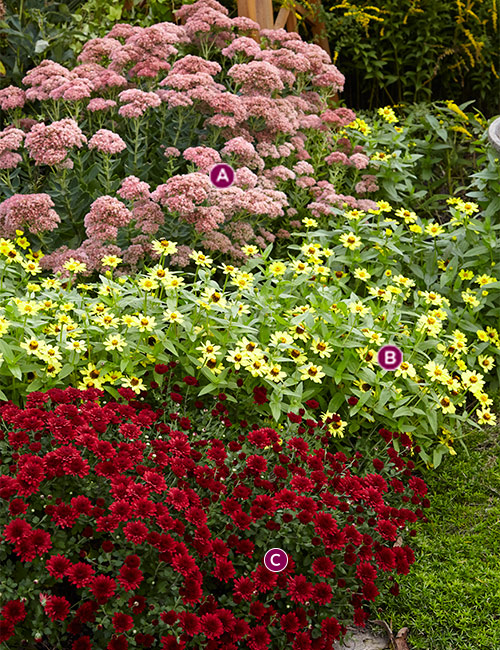
Feed pollinators with fall flowers
This low-maintenance sun-loving combination delivers vibrant blooms up until the first frost. It creates the perfect environment for lingering pollinators looking for a last-minute food source going into the winter months. Tucked between tall sedum’s rosy-pink blooms and garden mum’s red daisy-like flowers are golden yellow mounds of Zahara Yellow zinnias, all flowers that pollinators like bees and butterflies enjoy.
Tall sedum and mums also attract hoverflies, another important pollinator, providing a nectar source before they go into hibernation. Meanwhile, zinnias are very popular with hummingbirds needing a tasty treat before migration. Tidy up the tall sedum and garden mum in spring by cutting the dead foliage back to the ground. A bonus? Zahara zinnias don’t require deadheading: Just remove plants after frost kills the foliage.
A) ‘Autumn Fire’ tall sedum Hylotelephium spectabile
Perennial; pink late-summer blooms age to copper-red in fall; full sun; 1 to 2 ft. tall and wide; cold hardy in USDA zones 3 to 9
B) Zahara™ Yellow zinnia Zinnia marylandica
Annual; golden yellow blooms from late spring to frost; full sun; 12 to 18 in. tall and wide
C) ‘Five Alarm Red’ garden mum Chrysanthemum morifolium
Perennial; deep red blooms from summer through fall; full sun; 14 to 24 in. tall, 20 to 36 in. wide; cold hardy in USDA zones 5 to 9
You Might Also Like:
How to Grow Tall Sedum
Will My Mums Come Back Next Year?
Pollinator Garden Plant Pairings



